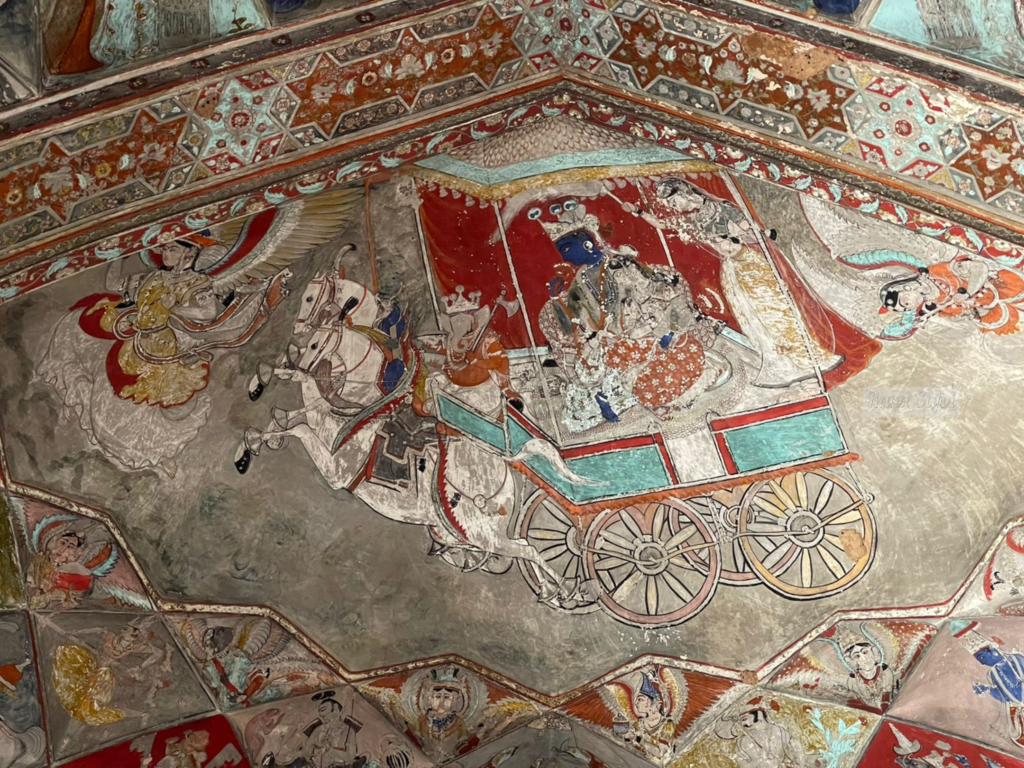
Rao Surjan Singh (r. 1554-1585) allied with the Mughals & served as governor of Varanasi and came in contact with Mughal painters. After him his son Rao Bhoj Singh succeeded him and he too spent time in the fort of Chunar like his father. It is here that they came in contact with painters of the Mughal atelier. Successors of Mir Saiyed Ali and Abdus Samad, the founders of the Mughal school of art, had finished a series of 36 ragamala in Chunar.
These were commissioned by the Hara rulers and became a template.
The Mughal style is apoarent in the Badal Mahal , with its red and gold murals. The Badal Palace as its name suggests is the top most level of the palace complex built by Rao Bhoj Singh.
When Rudyard Kipling saw the palace in in 1887 he wrote, “such a Palace [is] … the work of goblins rather than of men. It is built into and out of the hillside, in gigantic terrace on terrace, and dominates the whole of the city.”
The construction of the Bundi Fort was started Rao Surjan and his son Rao Bhoj Singh & built upon by successive rulers, each adding his own palace.
Bundi paintings, characterized by meticulous brushwork, are small in size. They are crafted with natural colors derived from minerals, vegetables, precious stones, silver, and gold.
The Cloud Palace, or Badal Mahal, within Garh Palace boasts some of southern Rajasthan’s finest paintings. Vibrantly colored depictions of Krishnas and Radhas encircle the vaulted dome, accompanied by murals portraying Krishna’s wedding procession led by Ganesh and Rama’s return from Sri Lanka to Ayodhya.
These were painted during Rao Ratan Singh’s reign but since he was most of the time posted in the Deccan during Shah Jahan’s reign, they were probably commissioned by his son Gopinath or one of his queens.
It betrays Mughal and Deccan influence.
There are five horizontal levels, with the lowest being ragamalas in 13 niches and vertical spaces.
Above that are paintings depicting hunting, polo games,elephant fights etc from the Rao’s life.
Above that are the painted areas and a pointed arch. The arches have murals from the life of Lord Krishna and Lord Rama.
There are large frescoes on the ceiling and it is central rasmandala which takes your breath away and you realise why it is called the Sistine Chapel of India.
The mural I want to focus on today is the Lord Krishna with Radha and the Parthasarthi is being driven by Lord Ganesh. They are escorted by angels.
The vibrant red of the background ( all natural colors) contrasts beautifully with Lord Krishna’s dark blue and Radha’s red lenhga.


